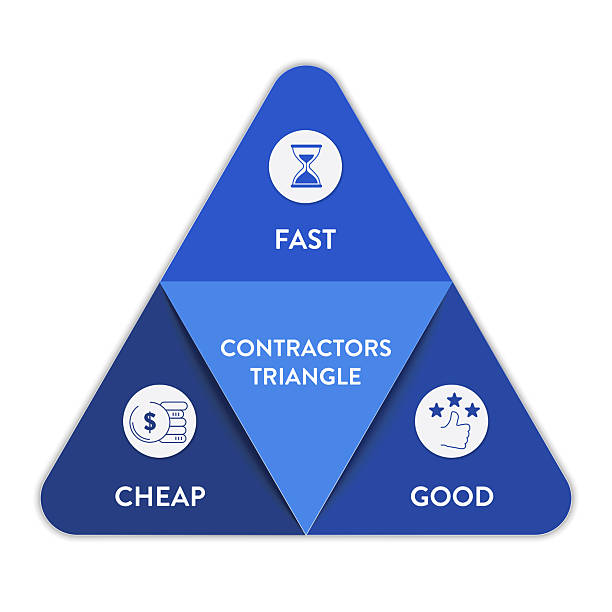How a Contractor Can Price Jobs Quickly: A Comprehensive Guide
Determining how much to charge for a project is one of the most difficult aspects of being a contractor. You risk losing the customer if you charge too much. You wind yourself working hard without making enough money if you set your prices too low. For this reason, it is critical for contractors to learn how to price work quickly.
Accuracy and quickness in task pricing are more important than ever due to growing material costs and shifting customer expectations. This tutorial will walk you through the process of swiftly calculating expenses, avoiding frequent blunders, and gaining your clients’ trust.
The Importance of Quick and Precise Pricing
Prior to hiring, clients typically evaluate many contractors. You risk losing the job to someone else sooner if you wait too long to provide an estimate. However, you could lose money if your estimate is hurried and incorrect.
Quick and precise pricing benefits you:
- Acquire additional projects
- Prevent monetary losses
- Establish a professional reputation
- Maintain the competitiveness of your company.

Step 1: Recognize the Work's Scope
You must ascertain the client’s desires before determining a fee. Pose specific queries like:
- What is the project’s size?
- What supplies are going to be used?
- What is the due date?
- Are there any particular prerequisites (such as permits or unique designs)?
You can avoid unforeseen expenses by having a well-defined scope of work.
Step 2: Make Use of Proper Equipment
Contractors will have a plethora of digital tools at their disposal to speed up pricing. For instance:
Calculators for square meters: To measure areas rapidly (useful for construction, painting, or flooring).
Apps for job costing: Programs that determine labor and material costs, such as Jobber or Buildertrend.
Templates: Previously created spreadsheets for frequently used tasks.
Websites such as Costus, for instance, offer resources pertaining to building insights and measurement tools. When estimating project sizes or expenses, contractors might find rapid answers by investigating such platforms.
Step 3: Dissect the Expenses
You must divide expenses into smaller components in order to determine a fair price:
- Labor costs: Multiply the number of hours by the hourly rate for each worker.
- Costs of materials: Determine the precise amount of materials required and factor in a tiny amount for waste.
- Equipment costs: Add in the cost of renting or using specialized machinery.
- Overheads: Utilities, insurance, transportation, and other business expenses.
- Profit margin: To ensure that the job is worthwhile, add your markup, which is often between 10% and 20%.
Step 4: Create a Standard Pricing System
Make a typical pricing chart if you frequently work on comparable projects. For instance:
- Painting: Price per square meter
- Flooring: Price per square meter, including material and labor
- Plumbing: Price per fixture or per hour
Using a standard chart will make you appear more professional, which enables you to provide estimates more quickly.
Step 5: Compare with Market Rates
Verify the prices being charged by other contractors in your neighborhood. In comparison to your competition, your price should not be excessively high or low. Being in the proper range will boost your chances of landing assignments because clients frequently do their homework before hiring.
Step 6: Get Instant Estimates using Technology
Customers adore prompt responses. In 2025, a lot of contractors use:
- Apps for smartphones that provide real-time quotes on-site
- Online calculators that assist with the costs of painting, tiling, or flooring
- Accelerated approvals with digital contracts
This expedites the procedure and demonstrates your dependability and modernity.
Step 7: Have Clear Communication with Clients
Always describe what is included, even if you provide a pricing in a hurry. For instance:
- “This cost covers materials, labor, and cleanup.”
- “Design modifications and permits are not included in this.”
Building trust and avoiding misunderstandings are two benefits of clear communication.
Step 8: Review and Adjust Regularly
Costs of labor and materials are always fluctuating. Every few months, review your price structure and make necessary adjustments based on market conditions.
Common Errors to Steer Clear of
Making a guess rather than doing the math results in a loss of profit.
- Ignoring overhead: Licenses, insurance, and fuel are frequently overlooked.
- Not changing the prices: Your rates must adapt to changing costs.
- Time underestimation: Always factor in extra time for unforeseen delays.
Conclusion
As a contractor, knowing how to quickly quote work will help you save time, attract more clients, and safeguard your earnings. You can give accurate and timely estimates by using digital tools, breaking down expenses, and developing regular procedures.
And keep in mind that even a tiny instrument, like a square meter calculator, or information from websites like Costus, can help you do your work more efficiently and professionally.
Therefore, precision and speed will always make you stand out, whether you are pricing a major building job or a minor repair.